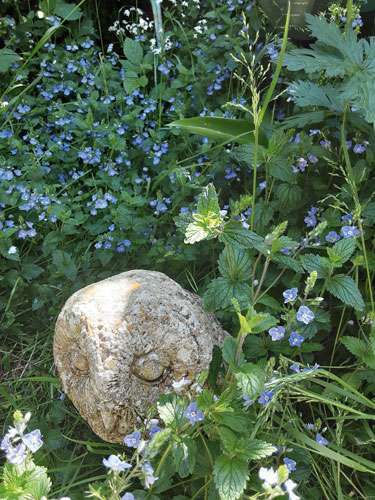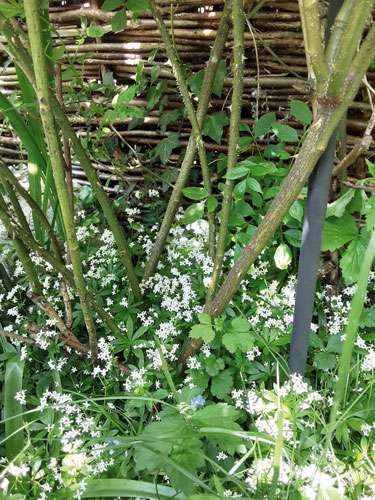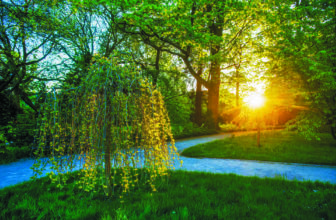
As those of you who read my articles will know, I have a wonderful bed of wild garlic and Alkanet that’s been a star in my garden for about fifteen years now (I believe I posted a picture of it in my article on organic gardening).
Over the past few years though, I started to wonder what it would be like if I let more of my garden go “wild” (or wilder – the trendy name is rewilding). I had no intention to just letting it get overgrown, I simply wondered what it would be like if I let more wild flowers (I have many already!) become a feature in certain places and so far, it’s been a beautiful success.
Don’t get me wrong, I love my roses, phlox, lavender, heliotrope, myrtle and hydrangeas et al, but I also love speedwell, woodruff, wild primroses, daisies, British bluebells, stitchwort, campion, chicory, vetch and lots more. As such, I’m encouraging these beautiful flowers to spread a bit more. The speedwell “experiment” mixed in amongst the woodruff has been a complete success and looks stunning with my little stone owl peeking through.
I’ve now started on another patch of the garden, under the pear tree where I’d encouraged wild primroses and of course they’ve spread beautifully over the years, but beyond that I’m in the process of also encouraging Herb Robert where I want it (instead of just pulling it out), along with vetch, mixed in with some Lady’s Mantle (which is a herb and part of my cultivated stock) and stitchwort. I think it will eventually look very pretty.
Woodruff beneath some Rose bushes
The other great thing about encouraging more wild flowers is that they prefer poor soil, so you don’t need to worry about feeding the soil. All I ever do anyway as an organic gardener, is to load all the fallen leaves in the Autumn back onto all the flower beds – it’s worked beautifully for the twenty-two years I’ve lived in Cranleigh and is what of course happens in the wild anyway. The worms do the rest!
If you’re interested in having a go, see what comes up in your garden first and then just garden those flowers like you would cultivated varieties (if you like them, that is!) – you only have to look when out on a walk just how well Nature knows how to combine plants to the best effect!
Finally, it’s great to see more and more greens, commons and even private grass verges left to themselves. It’s so easy to just leave them and try to move away from the “neat and tidy” effects that many have lived by. I also love grasses (not the sort you buy in the garden centre) but the wild ones that produce swathes of beautiful and feathery, shimmering colours of purple, pink, brown and orange which move like ripples on water when a breeze passes over them. They’re so stunning with buttercups and ox-eye daisies poking through, so think about giving them a chance!
Find out more at: www.facebook.com/howtoliveagreenerlife
See all of Sharon’s latest features HERE.
Main Photo: Speedwell with stone owl!












